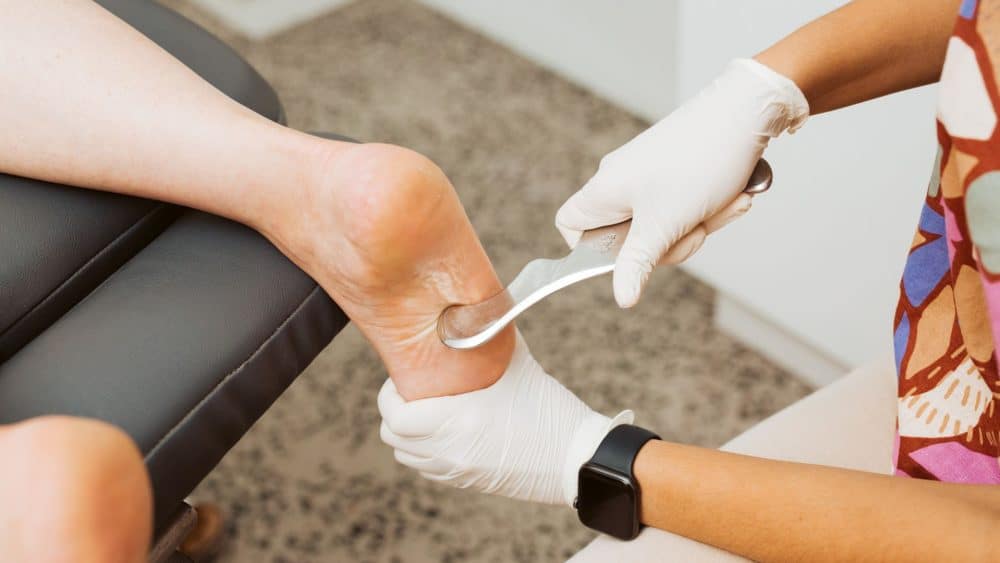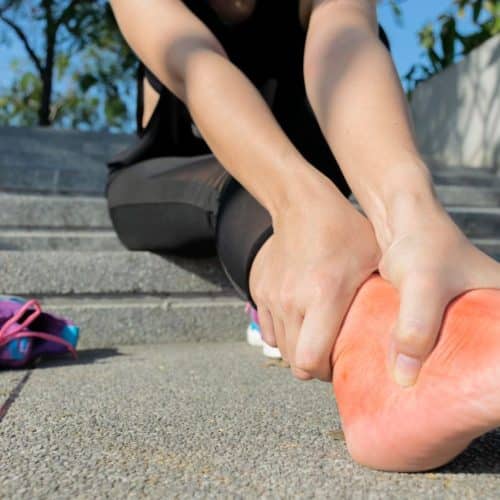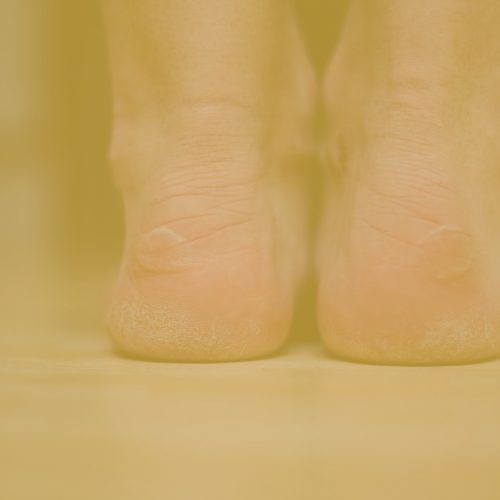Are you an avid runner who’s been grappling with the discomfort of plantar fasciitis? Can you continue hitting the pavement without aggravating the condition? We’ve got the answers you’re seeking. Plantar fasciitis, a common ailment causing heel pain due to inflammation of the thick band of tissue connecting your heel bone to your toes, can be a real challenge for runners. But can you run with plantar fasciitis without making matters worse?
The good news is that it’s possible to continue running with plantar fasciitis, but it requires a cautious approach. Ramping up your mileage or intensity too quickly can exacerbate the condition, leading to more pain and prolonged recovery. Incorporating proper stretching, supportive footwear, and low-impact cross-training can help alleviate strain on the plantar fascia. Remember, listening to your body and giving it adequate time to heal is paramount.
Curious to know how you can effectively manage plantar fasciitis while still enjoying your runs? We’ll explore essential dos and don’ts, effective exercises for strengthening the foot muscles, and the importance of gradual progression. Don’t let plantar fasciitis hold you back from your passion – learn how to lace up and hit the road smarter and pain-free.
Understanding Plantar Fasciitis
Plantar fasciitis is a common and sometimes disabling ailment that affects the arch of the foot and the heel of the foot. The plantar fascia is a thick band of connective tissue that runs down the sole of the foot. Its function is to maintain the structure of the foot and absorb shock when the foot is put through activities such as walking, running, and leaping. Plantar fasciitis is caused when this tissue gets irritated or inflamed, which contributes to the development of the condition.
1. Symptoms of Plantar Fasciitis
The hallmark symptom of plantar fasciitis is pain, typically experienced in the heel and arch area of the affected foot. This pain is often described as sharp, stabbing, or aching, and it tends to be most intense after periods of rest, such as waking up in the morning or after sitting for an extended period. The pain usually subsides as the foot is warmed up and moves more flexibly.
2. Causes and Risk Factors
Several factors contribute to the development of plantar fasciitis. One primary cause is repetitive stress on the plantar fascia, resulting from running, jumping, or walking for extended periods. Runners, athletes, and individuals on their feet for extended hours are at a higher risk of developing this condition.
Improper footwear is another significant contributor. Shoes that lack proper arch support, cushioning, and shock absorption can strain the plantar fascia and increase the likelihood of inflammation. Additionally, individuals with flat feet or high arches may be more susceptible to plantar fasciitis due to the uneven distribution of weight and pressure on the foot.
Tight calf muscles and Achilles tendons can also play a role in the development of plantar fasciitis. When these muscles are tight, they can alter the foot’s mechanics and increase strain on the plantar fascia. Obesity and excessive weight can further exacerbate the condition, as the extra weight places additional stress on the feet and heels.
3. Diagnosis and Treatment
If you suspect you have plantar fasciitis, it’s essential to consult a podiatrist for an accurate diagnosis. The podiatrist will inquire about your symptoms, medical history, and activity level during the examination. They may also perform a physical examination, which could involve evaluating your foot’s range of motion, checking for areas of tenderness, and assessing your gait.
In some cases, imaging tests such as X-rays or ultrasound may be recommended to rule out other potential causes of foot pain.
4. Prevention and Management
Preventing plantar fasciitis involves adopting certain lifestyle changes and practices. These include:
- Wearing Supportive Footwear: Choose shoes that provide adequate arch support, cushioning, and shock absorption. Avoid walking barefoot on hard surfaces.
- Gradual Increases in Activity: If you’re starting a new exercise routine or increasing your physical activity, gradually allow your body to adapt without placing excessive stress on the plantar fascia.
- Stretching and Strengthening: Engage in regular stretching and strengthening exercises for the calf muscles and Achilles tendon. This can improve the flexibility and stability of the foot.
- Maintain a Healthy Weight: Maintaining a healthy weight reduces the strain on your feet and can help prevent the development of plantar fasciitis.
Plantar fasciitis is a painful condition that requires proper care and attention. Understanding its causes, symptoms, and risk factors can empower individuals to take steps to prevent its onset or manage its effects. By making informed choices about footwear, exercise routines, and overall foot health, you can maintain an active lifestyle while minimising the impact of plantar fasciitis.
Running with Plantar Fasciitis: Is it Possible?
Running with plantar fasciitis can be challenging, as it requires a careful balance between staying active and allowing your foot to heal. Here’s a closer look at how you can approach running while dealing with plantar fasciitis:
1. Assessing Your Condition
Before lacing up your running shoes, assessing the severity of your plantar fasciitis is crucial. Consult a podiatrist or orthopedic specialist. They can evaluate your foot’s condition, diagnose the extent of inflammation or damage, and provide personalised guidance on whether running is viable.
2. Running Modifications
If your podiatrist gives you the go-ahead to continue running, it’s essential to make significant modifications to your running routine:
- Reduce Intensity: Scale back on the intensity of your runs. This might involve slowing your pace and avoiding high-intensity sprints or hill workouts.
- Decrease Duration: Shorten the duration of your runs. Instead of long distances, opt for shorter, more manageable distances to lessen the strain on your plantar fascia.
- Increase Warm-up and Cool-down: Dedicate more time to warming up before your run and cooling down afterwards. Gentle stretches and exercises can help prepare your foot for activity and promote recovery.
- Listen to Your Body: Closely to your foot’s signals during and after running. If you experience increased pain, discomfort, or unusual sensations, stop running and give your foot a break.
3. Choosing the Right Footwear
Selecting appropriate running shoes is crucial when dealing with plantar fasciitis. Look for shoes that offer:
- Arch Support: Wearing shoes with sufficient arch support can help in more evenly distributing weight and minimising strain on the plantar fascia. This can be achieved by wearing shoes with adequate arch support.
- Cushioning: Adequate cushioning in the midsole and heel area can absorb shock and lessen the impact on your foot.
- Stability: Opt for shoes that provide stability and minimise excessive movement, which can aggravate the condition.
Sometimes, your podiatrist might recommend orthotic inserts or custom-made insoles to provide additional support and alignment.
4. Cross-Training and Low-Impact Activities
While running might be your preferred form of exercise, it’s essential to consider incorporating low-impact activities and cross-training into your routine. Swimming, cycling, and using an elliptical machine are excellent options that offer cardiovascular benefits without subjecting your feet to the repetitive impact of running. These activities help maintain your fitness level while allowing your plantar fascia to recover.
5. Monitoring Progress and Adjusting
When you start jogging again while suffering from plantar fasciitis, pay special attention to how far you’ve come. Maintain a record of the fluctuating degrees of pain and suffering, as well as any improvements in the state of your foot. If you observe favourable changes, your healthcare practitioner may recommend that you progressively increase the time or intensity of your runs. This should be done only under their supervision.
Nevertheless, it is imperative that you take a step back and give your foot more time to recover if you encounter any setbacks or discomfort that does not go away. Trying to push through the discomfort might make the situation worse and lengthen the time it takes to heal.
It is feasible to run while suffering from plantar fasciitis; however, you will need to take extra precautions and be flexible. It is crucial to consult a trained podiatrist, to make any necessary adjustments to your running regimen, and to place a high priority on wearing suitable footwear. You may achieve a balance between chasing your running objectives and allowing your foot to recover if you pay close attention to the reactions your body gives you and are prepared to make adjustments to the way you go about things.
Keep in mind that the treatment for plantar fasciitis may seem different for each individual. It’s possible that what works well for one individual won’t be appropriate for another. Always put the health and well-being of your foot first, and if you feel you need it at any point during your running adventure with this problem, don’t be afraid to seek medical counsel.
Tips for Running with Plantar Fasciitis
Running when suffering from plantar fasciitis demands meticulous preparation, heightened self-awareness, and a dedication to your foot’s overall health. The following are some helpful hints that will guide you through the process of jogging while managing this condition:
1. Listen to Your Body
One of the most critical aspects of running with plantar fasciitis is paying close attention to your body’s signals. If you experience increased pain, discomfort, or a change in the quality of pain during your run, it’s essential to stop and assess the situation. Ignoring or pushing through severe pain can lead to further damage and an extended recovery. Prioritise your foot’s health above all else.
2. Ice and Rest
Consider applying ice to the afflicted region after your run to bring down any inflammation that may have occurred. It is possible to reduce pain and swelling by using an ice pack on the affected area for fifteen to twenty minutes. In addition, it is crucial for healing that you give your foot enough rest in between running sessions. A proper amount of rest allows your plantar fascia the chance to repair, which helps avoid overuse of the tissue.
3. Strengthening Exercises
Incorporating specific exercises to strengthen the muscles around your feet and calves can provide valuable support for your plantar fascia. Focus on exercises that target your calf muscles, Achilles tendon, and intrinsic foot muscles. Strengthening these areas can help alleviate some of the strain on the plantar fascia during your runs.
4. Stretching Routine
Stretching on a regular basis can help increase the flexibility of your plantar fascia and decrease the possibility that it will be strained more. Exercises that focus on gentle stretching can be beneficial to both the plantar fascia and the calf muscles. It is important to maintain flexibility in order to lower the chance of injury. One way to achieve this is to include stretches like these in your warm-up and cool-down routines.
5. Maintain a Healthy Weight
Because of the additional strain placed on the feet, being overweight can make the symptoms of plantar fasciitis significantly worse. If you are overweight, obtaining and keeping a healthy weight can considerably improve the condition of your feet. If you are overweight, you should strive towards achieving and maintaining a healthy weight. Through a combination of these and other measures, weight management can help make running more comfortable and less uncomfortable.
6. Footwear and Orthotics
Choosing the right footwear remains a cornerstone of running with plantar fasciitis. Invest in high-quality running shoes that provide excellent arch support, cushioning, and stability. If your podiatrist recommends, consider using orthotic inserts tailored to your foot’s needs. These inserts can further enhance support and alleviate discomfort.
7. Gradual Progression
Taking care of plantar fasciitis and continuing to run while managing the condition requires you to accept a cautious approach to advancement. Avoid making abrupt increases in the number of miles, pace, or intensity of your workouts. Instead, you should concentrate on making moderate but consistent progress that will allow your foot to adjust to the demands that running places on it without overloading it.
8. Stay Hydrated and Nourished
Maintaining one’s general health and fostering one’s recovery both require that one consume the appropriate amounts of fluids and food. Because dehydration can make inflammation worse, you should make sure you drink enough water before, during, and after each of your runs. Your body’s ability to repair itself may be helped along by eating a diet that is both healthy and rich in nutrients.
9. Consult Your Podiatrist
Running while suffering from plantar fasciitis requires you to maintain consistent communication with your primary care physician. They will be able to keep track of your development, make any required modifications to your treatment plan, and offer advice about whether you should forward your therapy or take a step back, depending on the state of your foot.
Conclusion
In conclusion, the topic of whether or not it is possible to run while suffering from plantar fasciitis is a complicated one that is determined by a number of different conditions. Although it is conceivable that some people may be able to continue running despite having this problem, it is essential to put your health and well-being ahead of anything else.
The inflammation of the plantar fascia, which is the tissue that runs from the heel to the toes, is the symptom of plantar fasciitis. This condition causes pain and discomfort in the foot. Running through the discomfort in order to maintain a certain pace might make the issue worse and cause permanent harm if you do it.
Having said that, this does not imply that you have to completely give up on your passion for running. Take into consideration the following advice if you want to keep active while having plantar fasciitis even when you’re treating it:
- Consult a Professional: Before making any decisions, consult a podiatrist or orthopedic specialist. They can assess the severity of your condition and provide personalised recommendations.
- Modify Your Routine: If approved by your podiatrist, modify your running routine. This might involve reducing your run frequency, intensity, or duration. Cross-training activities like swimming or cycling can also be gentler on your feet.
- Proper Footwear: Invest in high-quality running shoes with adequate arch support and cushioning. Orthotic inserts or custom-made insoles can further help alleviate discomfort.
- Stretching and Strengthening: Incorporate regular stretching and strengthening exercises for your feet and calves. This can improve flexibility and support the healing process.
- Listen to Your Body: Pay close attention to your body’s signals. If you experience pain while running, stopping and rest is crucial. Pushing through the pain can worsen the condition.
You said that you’ve been battling with plantar fasciitis; have you been able to continue jogging despite it? Leave a comment below with your best advice and lessons learned to assist those who are struggling with the same issue as you.
Keep in mind that the circumstances of each person are different. It’s possible that something that works well for one individual won’t work well for anyone else. Putting your health first and listening to the advice of trained podiatrists is the single most essential thing you can do for yourself. If running makes your plantar fasciitis worse, you should look into other types of exercise that are easier on your feet.
Running is not the only form of exercise. Even if you have plantar fasciitis, you may keep working towards your goals of keeping an active lifestyle and improving your overall health.
Content Summary
- Plantar fasciitis, a common ailment causing heel pain due to inflammation of the thick band of tissue connecting your heel bone to your toes, can be a real challenge for runners.
- The good news is that it’s possible to continue running with plantar fasciitis, but it requires a cautious approach.
- Incorporating proper stretching, supportive footwear, and low-impact cross-training can help alleviate strain on the plantar fascia.
- Remember, listening to your body and giving it adequate time to heal is paramount.
- Plantar fasciitis is a common and sometimes disabling ailment that affects the arch of the foot and the heel of the foot.
- The hallmark symptom of plantar fasciitis is pain, typically experienced in the heel and arch area of the affected foot.
- Several factors contribute to the development of plantar fasciitis.
- One primary cause is repetitive stress on the plantar fascia, resulting from running, jumping, or walking for extended periods.
- If you suspect you have plantar fasciitis, it’s essential to consult a podiatrist for an accurate diagnosis.
- Preventing plantar fasciitis involves adopting certain lifestyle changes and practices.
- Engage in regular stretching and strengthening exercises for the calf muscles and Achilles tendon.
- Plantar fasciitis is a painful condition that requires proper care and attention.
- Understanding its causes, symptoms, and risk factors can empower individuals to take steps to prevent its onset or manage its effects.
- By making informed choices about footwear, exercise routines, and overall foot health, you can maintain an active lifestyle while minimising the impact of plantar fasciitis.
- Running with plantar fasciitis can be challenging, as it requires a careful balance between staying active and allowing your foot to heal.
- Before lacing up your running shoes, assessing the severity of your plantar fasciitis is crucial.
- Scale back on the intensity of your runs.
- Shorten the duration of your runs.
- Closely to your foot’s signals during and after running.
- Selecting appropriate running shoes is crucial when dealing with plantar fasciitis.
- While running might be your preferred form of exercise, it’s essential to consider incorporating low-impact activities and cross-training into your routine.
- These activities help maintain your fitness level while allowing your plantar fascia to recover.
- Maintain a record of the fluctuating degrees of pain and suffering, as well as any improvements in the state of your foot.
- Nevertheless, it is imperative that you take a step back and give your foot more time to recover if you encounter any setbacks or discomfort that does not go away.
- It is feasible to run while suffering from plantar fasciitis; however, you will need to take extra precautions and be flexible.
- It is crucial to consult a trained podiatrist, to make any necessary adjustments to your running regimen, and to place a high priority on wearing the suitable footwear.
- Keep in mind that the treatment for plantar fasciitis may seem different for each individual.
- Always put the health and well-being of your foot first, and if you feel you need it at any point during your running adventure with this problem, don’t be afraid to seek medical counsel.
- Running when suffering from plantar fasciitis demands meticulous preparation, heightened self-awareness, and a dedication to your foot’s overall health.
- One of the most critical aspects of running with plantar fasciitis is paying close attention to your body’s signals.
- If you experience increased pain, discomfort, or a change in the quality of pain during your run, it’s essential to stop and assess the situation.
- Prioritise your foot’s health above all else.
- In addition, it is crucial for healing that you give your foot enough rest in between running sessions.
- Incorporating specific exercises to strengthen the muscles around your feet and calves can provide valuable support for your plantar fascia.
- Because of the additional strain placed on the feet, being overweight can make the symptoms of plantar fasciitis significantly worse.
- If you are overweight, obtaining and keeping a healthy weight can considerably improve the condition of your feet.
- Taking care of plantar fasciitis and continuing to run while managing the condition requires you to accept a cautious approach to advancement.
- Maintaining one’s general health and fostering one’s recovery both require that one consume the appropriate amounts of fluids and food.
- Running while suffering from plantar fasciitis requires you to maintain consistent communication with your primary care physician.
- In conclusion, the topic of whether or not it is possible to run while suffering from plantar fasciitis is a complicated one that is determined by a number of different conditions.
- This condition causes pain and discomfort in the foot.
- Before making any decisions, consult a podiatrist or orthopedic specialist.
- If approved by your podiatrist, modify your running routine.
- This might involve reducing your run frequency, intensity, or duration.
- Invest in high-quality running shoes with adequate arch support and cushioning.
- Incorporate regular stretching and strengthening exercises for your feet and calves.
- Pay close attention to your body’s signals.
- If you experience pain while running, stopping and rest is crucial.
- Pushing through the pain can worsen the condition.
- Putting your health first and listening to the advice of trained podiatrists is the single most essential thing you can do for yourself.
- If running makes your plantar fasciitis worse, you should look into other types of exercise that are easier on your feet.
- Even if you have plantar fasciitis, you may keep working towards your goals of keeping an active lifestyle and improving your overall health.
FAQs About Running with Plantar Fasciitis
1. Can running worsen plantar fasciitis?
Running can exacerbate plantar fasciitis if not done correctly. Seek professional advice and make necessary adjustments to your routine.
2. Are there any specific shoes for running with plantar fasciitis?
Yes, shoes with proper arch support and cushioning are recommended for running with plantar fasciitis.
3. How long does it take to recover from plantar fasciitis?
Recovery time varies but can take several months with proper care and treatment.
4. Can I still participate in races with plantar fasciitis?
Participating in races may not be advisable during the acute phase of plantar fasciitis. Consult your podiatrist for personalised guidance.
5. Are there any long-term complications of plantar fasciitis?
With appropriate management, most individuals recover well. However, chronic cases may require ongoing attention to prevent recurrence.










